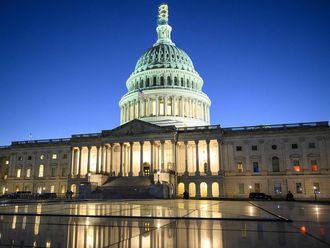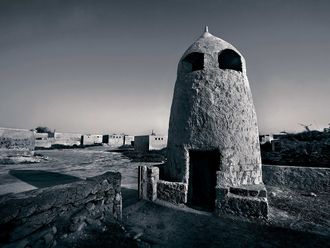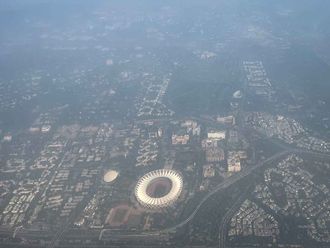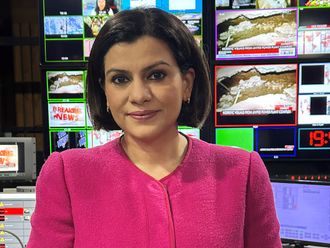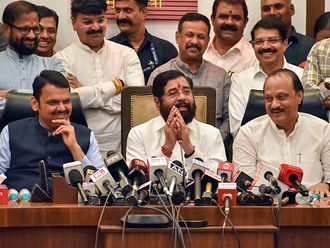Typhoon Haiyan struck the Philippines on November 8, killing thousands, affecting millions, and leaving hundreds of thousands of Filipinos desperate for help. A natural disaster of that magnitude requires a massive relief effort and the US took the lead: Dispatching the aircraft carrier USS George Washington, distributing food and water and manoeuvring rescuers and supplies to remote areas. The US Agency for International Development (USAID) pledged more than $22 million (Dh80.91 million) in assistance.
US allies soon followed. Japan offered $30 million in emergency relief, along with roughly 1,000 soldiers to help deliver the aid, on top of ongoing assistance programmes, such as $20 million through the Asian Development Bank. Australia pledged $10 million, South Korea $5 million and when the British carrier, the HMS Illustrious, arrives on November 24, it will begin delivering some $30 million in relief supplies. But China, Asia’s rising power, is noteworthy for its stinginess. Beijing originally pledged $100,000, increasing that to a still-paltry $1.6 million last Thursday.
Since former US secretary of state Hillary Clinton announced the rebalance to Asia in late 2011, many in the region have doubted America’s ability to sustain the level of its operations in the Pacific. In October, for example, US President Barack Obama’s absence from two prominent Asian meetings due to the crisis in Washington over the government shutdown allowed Beijing to steal the spotlight. But when it comes to global crises, including natural disasters, it is still the US — even war wary, reputationally challenged, fiscally indebted and politically gridlocked — that takes the leading role. The response to Haiyan could be a turning point for the United States in Asia: an opportunity to re-up the pivot, and to pour cold water on the narrative of a dominant China.
That is not to say China is not trying to play a more assertive role in the region. Since taking office in November 2012, Chinese President Xi Jinping has focused on maintaining order and economic growth at home while reducing external conflicts that could impede China’s rise. Xi and his colleagues envision their country eventually supplanting the US as the world’s largest economy and sharing — at a minimum — responsibility for the Asia-Pacific region. China is emphasising its periphery, particularly mainland Southeast Asia. In October, Xi announced plans to create and fund an “Asian infrastructure bank”.
But China still fails at building soft power in the region. In early November, Chinese scholars and even officials emphasised to my colleagues the tiered levels of Chinese friends and partners. Countries that support China diplomatically or bring wealth to China, they said, are given preferential treatment — almost like international relations as one big fundraising tribute. Because tensions are high with Japan over disputed islands in the East China Sea, and with the Philippines over disputed territory in the South China Sea, Beijing withholds cooperation and support from those two nations, instead doling out rewards to those countries most willing to work closely with China. Although this approach sometimes mutes regional criticism, it tends to fail at persuading neighbours that a more potent China will look after their interests.
And this is where the US rebalancing, or “pivot” to Asia comes in. The region has generally viewed the pivot in military terms, as a reassurance of US presence in Asia, and as a counterweight to Chinese pressure and coercion. But as the distribution of world power continues to shift from West to East, the US can also use the pivot to help build an inclusive, rules-based order in Asia. An open trading regime must be part of that. But to foster China’s potential as a force for good, the US and its allies need to integrate China into this order.
Instituting a common response to humanitarian disasters is a good place for China and the US to start. Holding back assistance to neighbours because they defend their core national interests against a more powerful neighbour who occupies a disputed area — as China does with the Scarborough Shoal in the South China Sea — goes against international norms. If the US can protect universal rights such as freedom of the seas and promote more effective regional security cooperation, it will continue to be a great power that is welcome throughout the region.
China appears eager to cooperate with the US on disaster relief. The two sides have shared detailed lessons learned in responding to domestic disasters, including Hurricane Katrina in 2005 and the 2008 Sichuan earthquake that killed roughly 87,000 people. In June, the two countries cooperated with an Asia-wide humanitarian assistance and military medicine exercise, allowing China to showcase its photogenic military hospital ship, dubbed the “The Peace Ark”. Unfortunately, that ship remains docked in a Chinese port. Adding to the irony, on November 12, Chinese and US troops participated in a joint humanitarian aid and disaster relief exercise in Hawaii, the exact time the Philippines needed urgent support. China under Xi wants a “new type of great power relationship” with the US — an invitation to further push China to cooperate on disaster relief.
This pays dividends for the US domestically, as well. The US leadership, in helping those in desperate need around the world, is a forceful riposte to declinists, who ignore America’s enduring and exceptional global role. Bipartisan support for US humanitarian efforts is a hopeful instance of policymakers pulling together to achieve greatness.
Obama is seeking more than $4.1 billion for the fiscal year 2014 for humanitarian assistance. Humanitarian aid should not be used as a political tool, but that does not deny the reputational advantages of doing good and the hits from sitting idle during a crisis. It is a lesson China is learning right now.
— Washington Post
Patrick M. Cronin is senior director of the Asia-Pacific Security Programme at the Centre for a New American Security.


